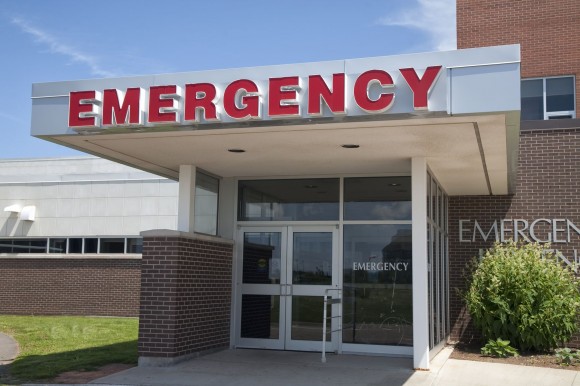PHOENIX — Nearly a third of injured workers in Massachusetts sought treatment for strains and sprains in a hospital emergency room, while in California and Nevada only 10% did, according to a study by the Workers’ Compensation Research Institute.
That wide disparity was repeated for other types of injuries in the first-ever multi-state comparison of where workers’ compensation payments choose to seek treatment. The findings suggest that some state workers’ compensation systems are not steering care to the most cost-effective health care facilities.
 “You wouldn’t expect to see such variation,” said William Monnin-Browder, co-author of the study.
“You wouldn’t expect to see such variation,” said William Monnin-Browder, co-author of the study.
The findings were presented during the WCRI’s annual conference, which concluded March 22.
Olesya Fomenko, the lead author of the study, said she is puzzled by the wide variation among the states. Fomekno said that Massachusetts has one of the highest percentage of residents with health insurance in the nation, in part because of a subsidized health insurance plan shepherded into law by former Gov. Mitt Romney. Generally, health insurance brings with it managed-care incentives that direct routine care away from hospital emergency rooms.
She said it appears, however, that local norms influence where people seek care.
The study examined “pre-COVID” 2019 data from 28 states. The study found that 44% of all new workplace injuries in Massachusetts were treated initially in a hospital emergency room, 37% in Mississippi and 33% in New York. On the other end of the spectrum, only 17% of new workplace injuries in California were treated in an emergency room, 19% in Nevada and 20% in Arizona.
The data showed that some emergency room use was driven by medical necessity. For example, 58% of fractures that resulted in lost-time claims were initially treated in emergency rooms in the 28 study states. In contrast, only 17% of strains and sprains that did not result in lost time were.
However, several states exhibited a high use of emergency room use even for less urgent injuries. In New York, 25% of injured workers sought initial treatment for strains and sprains in an emergency room; Mississippi 23%, Louisiana 21% and New Mexico 20%.
Injured workers in states where employees control the place of care tended to use emergency rooms more than states where employers direct care. Louisiana, Mississippi, New York and Massachusetts are all employee-choice states. In California, by contrast, workers generally must choose treatment facilities from medical provider networks established by employers, while in Nevada employers decide where workers get care.
Higher emergency room usage rates by injured workers tended to follow patterns in general health care. Massachusetts and New York, for example, have a per-capita emergency room discharge rates of more than 450 per 1,000 population, while California, Nevada and Arizona had per-capita discharge rates of less than 350 per 1,000.
Emergency room use was also higher in states with relatively low prices for evaluation and management services. The workers’ compensation systems in Massachusetts, New York and Louisiana each have relatively low E&M prices, the study says.
Topics Workers' Compensation
Was this article valuable?
Here are more articles you may enjoy.



 Four in New Jersey Face Charges in Alleged $250K Travel Insurance Scam
Four in New Jersey Face Charges in Alleged $250K Travel Insurance Scam  ’60 Minutes’ Homeowners Ask Court to Force DFS to Divulge Heritage Probe Info
’60 Minutes’ Homeowners Ask Court to Force DFS to Divulge Heritage Probe Info  2 New Jersey Pilots Killed in Helicopter Collision Frequented Nearby Cafe Together
2 New Jersey Pilots Killed in Helicopter Collision Frequented Nearby Cafe Together  MAPFRE Accuses AAA of Violating Long-Time Exclusive Marketing Agreement
MAPFRE Accuses AAA of Violating Long-Time Exclusive Marketing Agreement 

